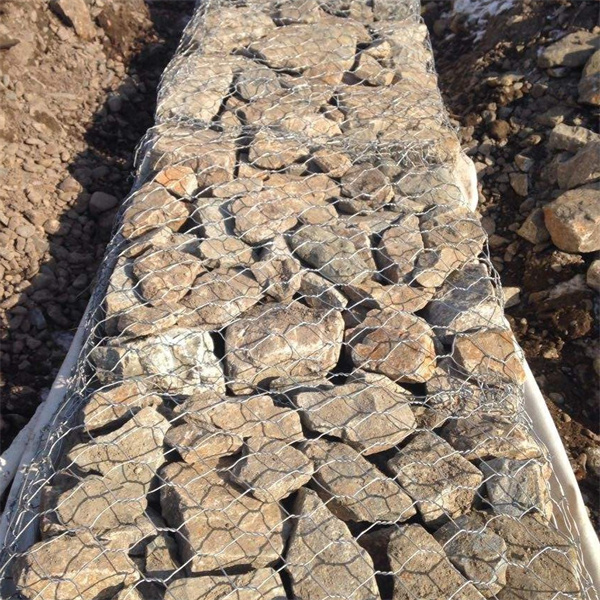aug . 17, 2024 07:02 Back to list
Vegetated Gabion Wall Production and Manufacturing Solutions for Sustainable Landscaping
The Rise of Vegetated Gabion Walls in Eco-Friendly Construction
In recent years, sustainability has become a focal point in construction, leading to innovative solutions that align with environmental stewardship. One such solution gaining momentum is the use of vegetated gabion walls. These structures not only provide essential structural support and erosion control but also introduce a natural aesthetic to landscapes, making them a favorite in eco-friendly construction practices.
Understanding Gabion Walls
Gabion walls are structures made of wire mesh containers filled with rocks, stones, or other materials. Traditionally, they serve as retaining walls and barriers, particularly in areas prone to erosion or landslides. The versatility of gabion walls allows them to be used in various applications, from road construction to landscaping.
However, the introduction of vegetation to gabion walls takes their benefits even further. By integrating plants into the gabion structure, these walls promote biodiversity, enhance aesthetic appeal, and improve environmental quality. Essentially, vegetated gabion walls act as living structures, blending seamlessly with their surroundings.
Benefits of Vegetated Gabion Walls
1. Erosion Control and Habitat Creation Vegetated gabion walls provide excellent erosion control. The vegetation planted in and around the wall’s structure helps stabilize the soil, reducing runoff and preventing soil loss. Additionally, these walls create habitats for various species of animals and plants, contributing to overall ecosystem health.
2. Aesthetic Appeal One of the most significant advantages of vegetated gabion walls is their visual appeal. Unlike traditional concrete barriers, vegetated walls introduce greenery and natural elements to urban and rural settings. This aesthetic enhancement can improve property values and the overall ambiance of an area.
vegetated gabion wall factory

3. Stormwater Management The incorporation of vegetation aids in stormwater management. The plants absorb rainwater, reducing runoff and filtering pollutants before they enter the groundwater or nearby bodies of water. This makes vegetated gabion walls a valuable asset in flood-prone regions.
4. Sustainability By utilizing local and natural materials, vegetated gabion walls provide a sustainable alternative to traditional building methods. The use of native plants in the gabion’s design promotes biodiversity and requires less water and maintenance compared to exotic species.
5. Cost-Effectiveness While the initial installation cost may be higher than traditional walls, the long-term benefits - including reduced maintenance, increased durability, and environmental improvements - make them a cost-effective option over time.
Implementation in Construction
The construction of vegetated gabion walls begins with selecting the appropriate wire mesh and filling materials. Local stone or recycled materials are often used to minimize the environmental impact. Once the gabion framework is assembled, the selection of native vegetation is crucial. Plants that are well-suited to the local climate and soil conditions will thrive, ensuring the wall's effectiveness in erosion control and aesthetic contribution.
In urban areas, vegetated gabion walls can be used in parks, along highways, and in garden design. They are not only functional but can also serve as educational tools, illustrating sustainable practices in action. Furthermore, their implementation encourages community involvement as local residents can participate in the planting and maintenance efforts.
Conclusion
As the demand for sustainable and environmentally friendly construction practices increases, vegetated gabion walls stand out as an innovative solution. By merging engineering with nature, these walls offer numerous benefits that include erosion control, aesthetic improvements, and enhanced biodiversity. Their adaptability and sustainability make them a powerful tool for builders and landscape architects aiming to create resilient, eco-conscious developments. As we move towards a greener future, embracing such solutions will be critical in preserving our environment while meeting the needs of urban development.
-
Why PVC Coated Gabion Mattress Is the Best Solution for Long-Term Erosion Control
NewsMay.23,2025
-
Gabion Wire Mesh: The Reinforced Solution for Modern Construction and Landscape Design
NewsMay.23,2025
-
Gabion Wall: The Flexible, Seismic-Resistant Solution for Modern Landscaping and Construction
NewsMay.23,2025
-
Gabion Wall Solutions: The Durable, Decorative, and Affordable Choice for Every Landscape
NewsMay.23,2025
-
Gabion Basket: The Durable and Flexible Alternative to Traditional Retaining Walls
NewsMay.23,2025
-
Gabion Basket: The Proven Solution for Slope Stability and Flood Control
NewsMay.23,2025
-
Versatility of Chain Link Fence Gabion
NewsMay.13,2025






